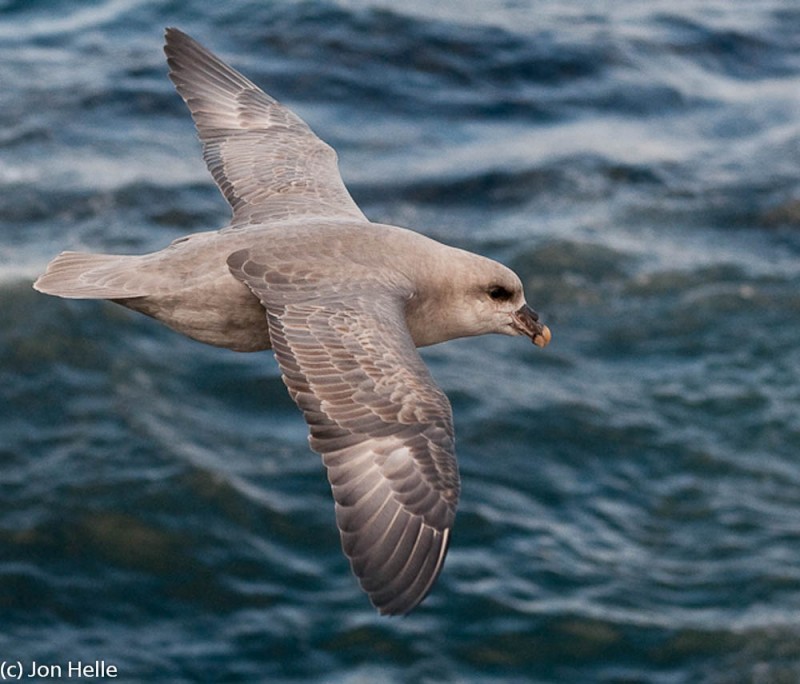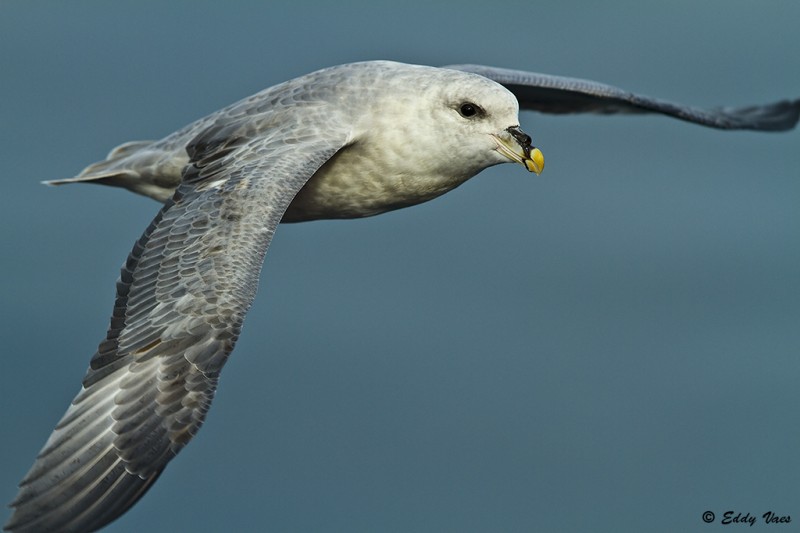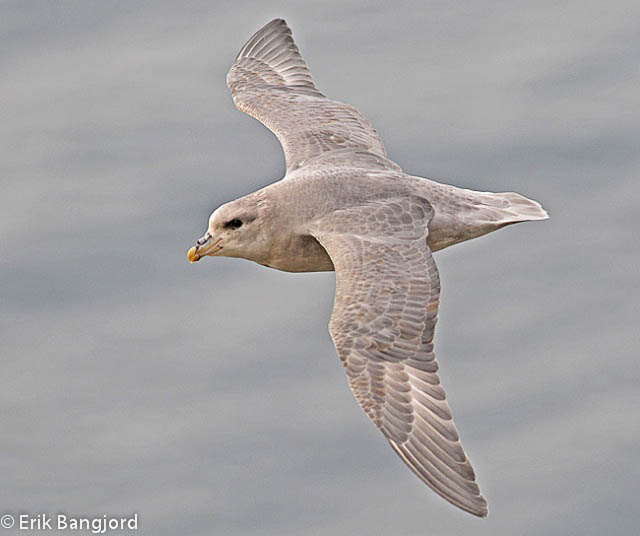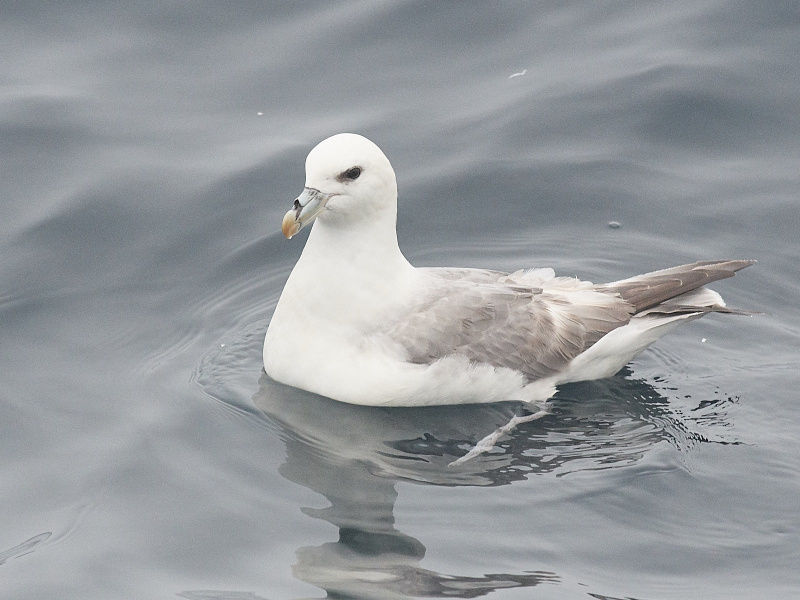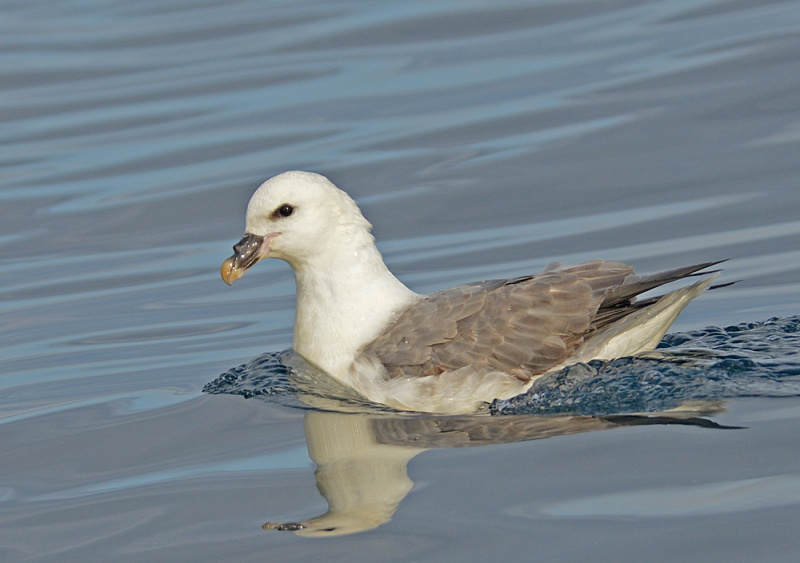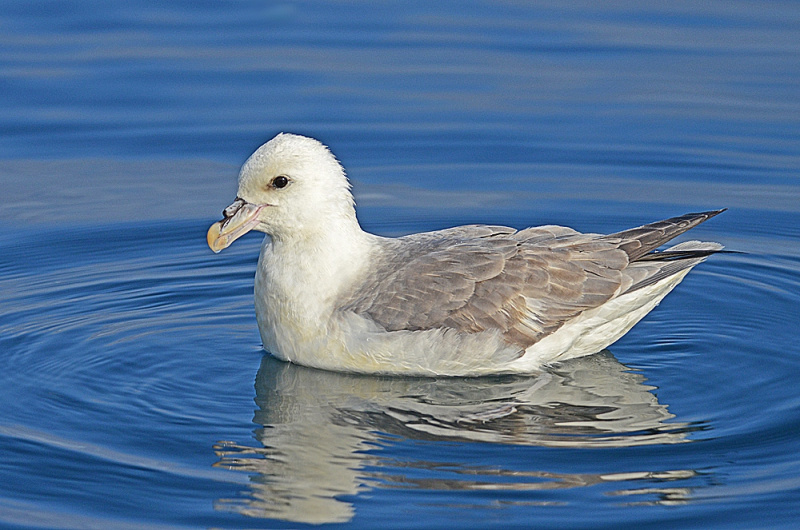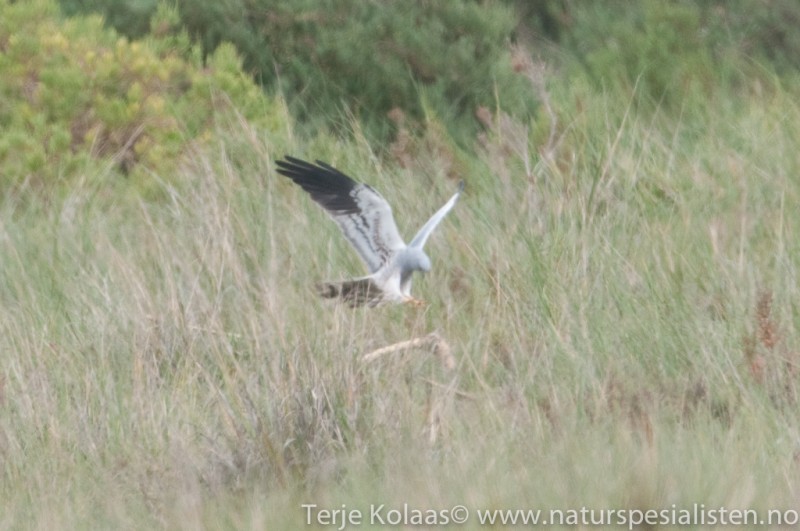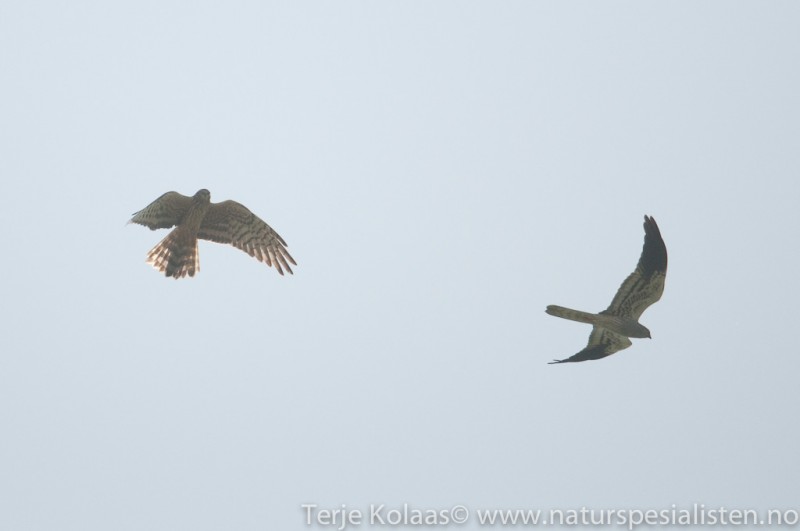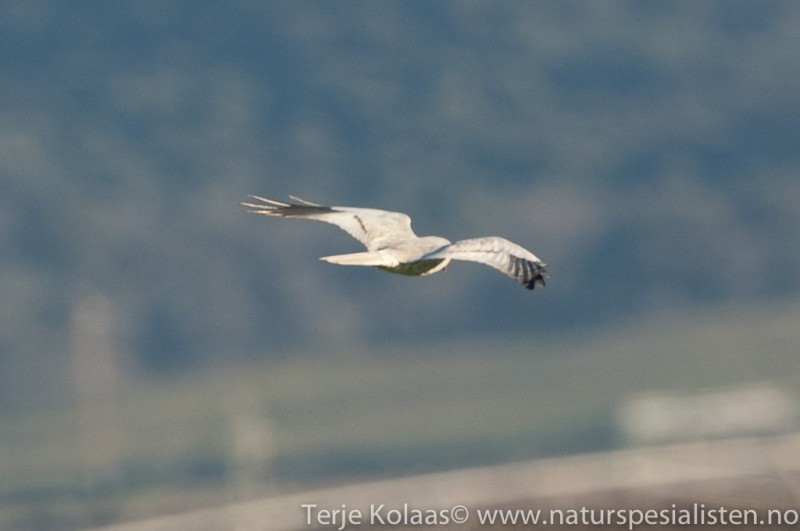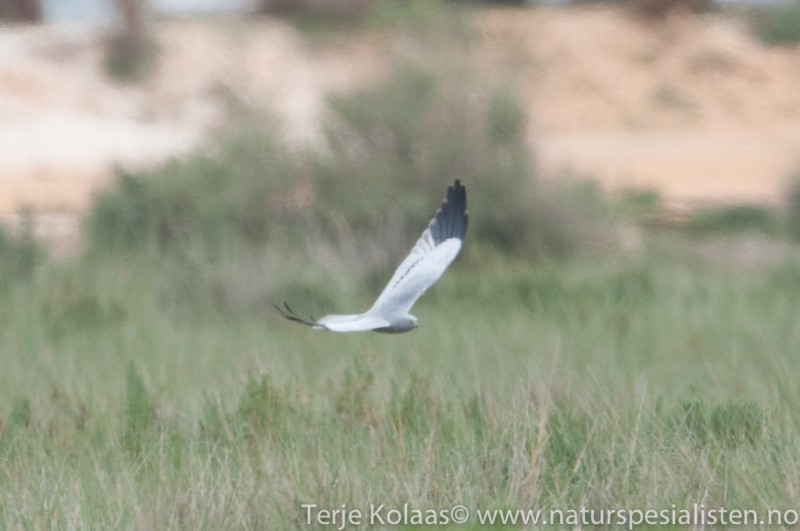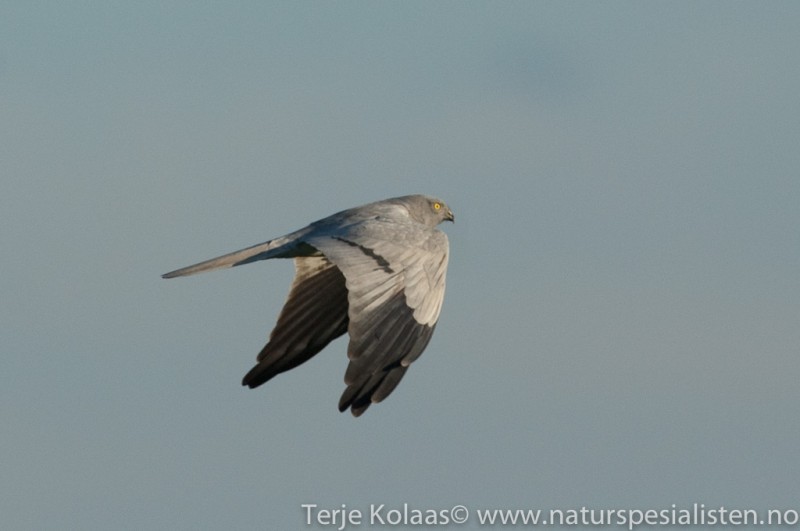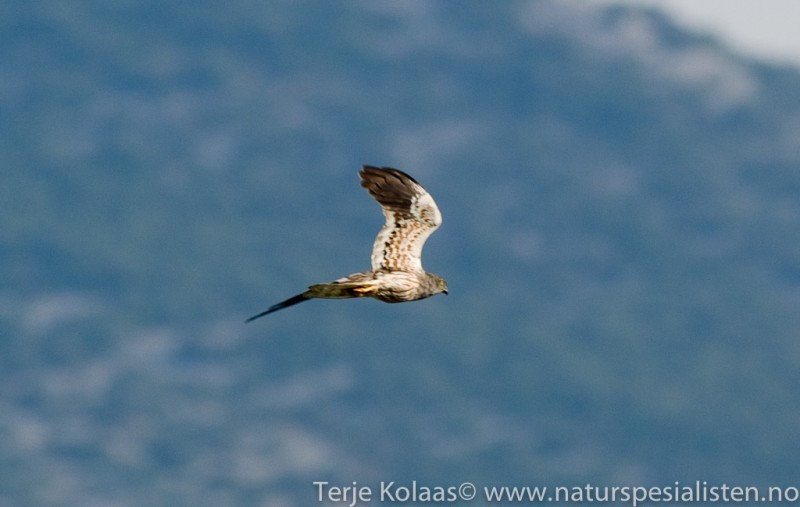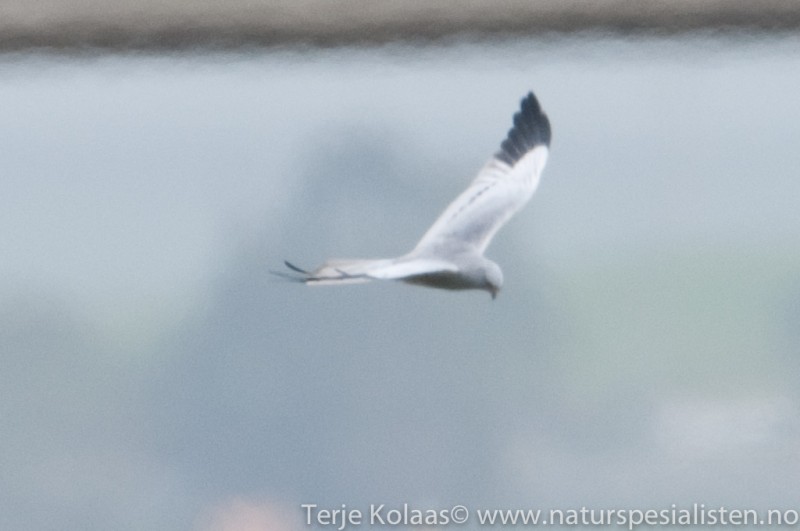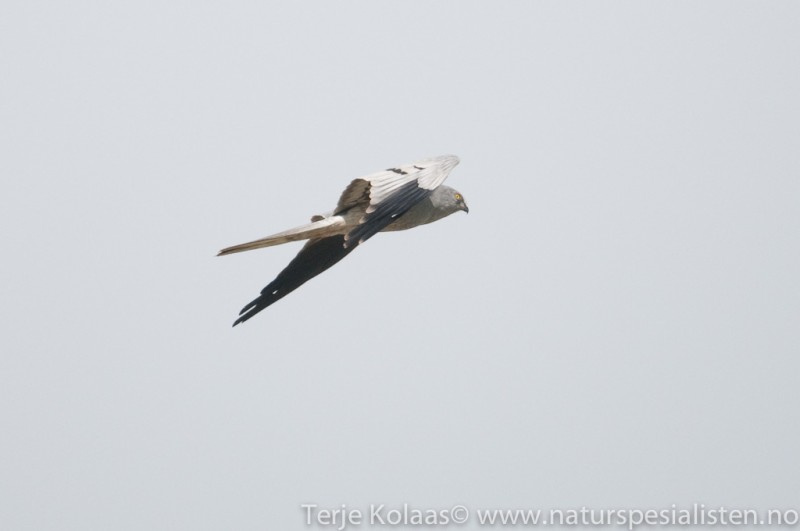Fulmar (Fulmarus glacialis)
Montagu's Harrier (Circus pygargus)
Occurs in dark and pale morph. Plumage recalling gulls more than shearwaters (especially pale morph). Differs from shearwaters in white or pale head, compact body, short and heavy bill and broad wings. Flight pattern distinguishes it from gulls, and is similar to other tubenoses. Glides on stiff wings with occasional bursts of shallow and stiff wing-beats. Pale base of primaries visible at considerable distance in both dark and pale morph. Dark morph most common in high-arctic areas, pale morph most common in southern breeding range.
Sound:Mostly heard on breeding ground. Coarse, harsh, staccato calls when courting or quarrelling.
Social interaction:
Distribution:
Wikipedia: map (se also Xeno-canto below)
Ecology:Birdlife ecology
Links:
Observation.org Latest observations
Image search Flickr NB! May give other species
CCSounds:Recorded by Stein Ø. Nilsen,http://www.xeno-canto.org ,CC license
Elegant harrier, with slender wings and 4 "fingers". Adult male easily recognized by single black band on upperwing, and double on underwing, and by rufous under wing-coverts. Chest is considerably darker grey than in Pallid Harrier, in contrast to white lower belly. Adult female differs from Hen- and Pallid Harrier by dark upper wing-band (not as prominent as in male). Broad, pale subterminal band on underwing reaching all the way to wing pit. Under wing coverts barred. Immature birds told from Hen Harrier by rufous, almost unstreaked underparts. From Pallid Harrier by dark wing tips and no marked, dark neck sides or pale collar. Beware of moulting Hen Harriers, with 4 "fingers".
Sound:Quite similar to Hen Harrier. Seldom heard, even at breeding ground. Sharp "ke-ke-ke-ke", and various high-pitched whistling sounds.
Call:
Distribution:
Wikipedia: map (se also Xeno-canto below)
Ecology:Birdlife ecology
Links:
Observation.org Latest observations
Image search Flickr NB! May give other species
CCCC-sound:Marco Dragonetti, Licence,Link.

 English
English Albanian
Albanian
 Armenian
Armenian
 Bulgarian
Bulgarian
 Catalan
Catalan
 Croatian
Croatian
 Czech
Czech
 Danish
Danish
 Dutch
Dutch
 Finnish
Finnish
 French
French
 Georgian
Georgian
 German
German
 Greek
Greek
 Hungarian
Hungarian
 Italian
Italian
 Latvian
Latvian
 Lithuanian
Lithuanian
 Macedonian
Macedonian
 Norwegian
Norwegian
 Polish
Polish
 Portuguese
Portuguese
 Romanian
Romanian
 Russian
Russian
 Sami : Lule sami
Sami : Lule sami
 Sami : North sami
Sami : North sami
 Sami : South sami
Sami : South sami
 Scientific names
Scientific names
 Serbian
Serbian
 Spanish
Spanish
 Swedish
Swedish
 Ukrainian
Ukrainian


